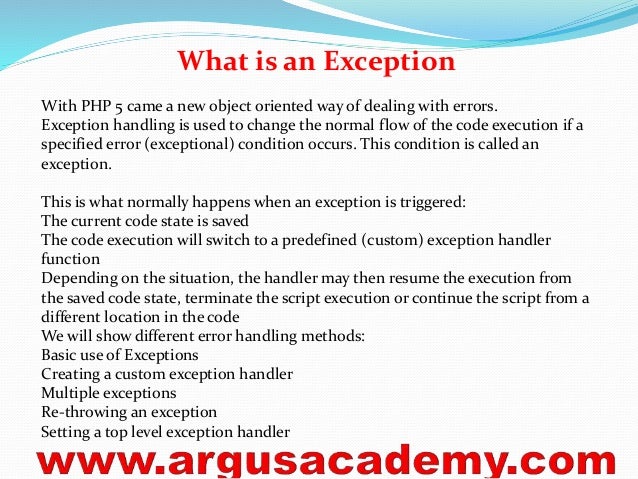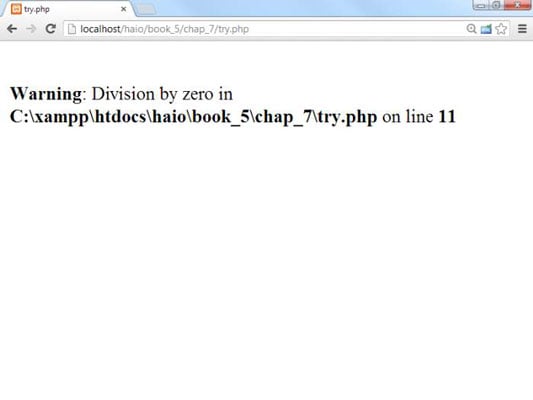
- #PHP TRY CATCH SPECIFIC EXCEPTION HOW TO#
- #PHP TRY CATCH SPECIFIC EXCEPTION CODE#
- #PHP TRY CATCH SPECIFIC EXCEPTION FREE#
Catch and handle exceptions as close to the source of error as possible It also makes debugging easier since you can easily identify where the problem occurred.
#PHP TRY CATCH SPECIFIC EXCEPTION CODE#
Using exceptions correctly will help ensure your code is more robust and maintainable. However, if a user enters invalid data into a form, it would be better to handle this with a validation check and return an appropriate error message. For example, if an API call fails due to a network issue, it would make sense to throw an exception. Exceptions should only be used to report exceptional conditions that cannot be handled by the program in any other way. Use exceptions to report exceptional conditions onlyĮxceptions are a powerful tool for handling errors, but they should not be used as a substitute for normal control flow. This will help keep your code clean and maintainable. Instead of throwing exceptions, use if-else statements or switch statements to handle different scenarios. If you find yourself using exceptions for flow control, it’s likely time to refactor your code. It’s also important to remember that exceptions should only be thrown when something truly exceptional happens, such as an error in the system or an invalid input from the user. Using exceptions for flow control can lead to unexpected results and make debugging difficult. Don’t use exceptions for flow controlĮxceptions are meant to be used for exceptional cases, not as a way of controlling the flow of your code. By following these best practices, you can ensure that your code is reliable and secure.
#PHP TRY CATCH SPECIFIC EXCEPTION HOW TO#
We will look at how to properly handle exceptions, how to log exceptions, and how to use exception handling to improve the performance of your code. In this article, we will discuss 10 best practices for exception handling in PHP. It is important to handle exceptions properly in order to ensure that your code is robust and reliable. If you need to report different types of exceptions in different ways, you may use the reportable method to register a closure that should be executed when an exception of a given type needs to be reported.Exception handling is an important part of any programming language, and PHP is no exception.
#PHP TRY CATCH SPECIFIC EXCEPTION FREE#
However, you are free to log exceptions however you wish. By default, exceptions will be logged based on your logging configuration. Exception reporting is used to log exceptions or send them to an external service like Flare, Bugsnag, or Sentry. We'll examine each of these concepts in detail. This class contains a register method where you may register custom exception reporting and rendering callbacks. If the value is set to true in production, you risk exposing sensitive configuration values to your application's end users.Īll exceptions are handled by the App\Exceptions\Handler class. In your production environment, this value should always be false. env file.ĭuring local development, you should set the APP_DEBUG environment variable to true. By default, this option is set to respect the value of the APP_DEBUG environment variable, which is stored in your. The debug option in your config/app.php configuration file determines how much information about an error is actually displayed to the user.


We'll dive deeper into this class throughout this documentation.

The App\Exceptions\Handler class is where all exceptions thrown by your application are logged and then rendered to the user. When you start a new Laravel project, error and exception handling is already configured for you.


 0 kommentar(er)
0 kommentar(er)
